Every spring – which is just around the corner – a fresh bloom of Southern California wildflowers appears, and as spring inches closer to summer, those SoCal wildflowers start to say goodbye for the season. This offers an opportunity to embark on hikes across L.A. to catch the colorful blooms or even take a day trip to see the desert flora, from California poppies to lupines… believe us when we say the Golden State’s diverse flora produces a kaleidoscope of colors on roadways, hillsides and meadows.
Hiking through wildflower-dotted fields or driving past hillsides painted in a sea of purple, orange and yellow can be an unforgettable experience, but with such an incredible array of wildflower spectacles across the state, it’s hard to pick the best one. Fret not, though: we’ve compiled a short list of the best California poppy viewing experiences near Woodland Hills to help you discover the rich beauty just beyond the vibrant shopping, dining and entertainment that typically defines our neighborhoods.
Further, we have also included a California poppy do’s and don’ts list at the end of the article to keep you and the delicate environment around you safe and protected.
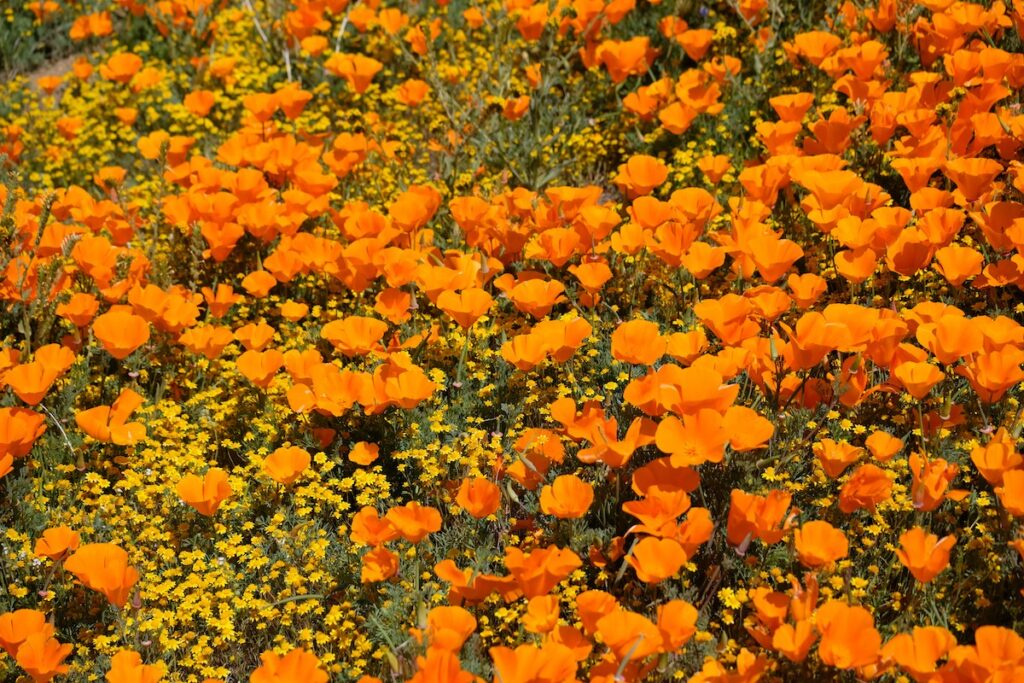
Malibu Creek State Park, located at 1925 Las Virgenes Road in Calabasas, is just 25 miles from downtown Los Angeles and features hiking, fishing, bird-watching, mountain biking, rock-climbing and horseback riding opportunities, with 14-mile-long Malibu Creek being the principal watercourse of the Santa Monica Mountains that ends at Malibu Lagoon. Experience 15 miles of a streamside trail through oak and sycamore woodlands on chaparral-covered slopes, and then follow the trail along Malibu Creek to enjoy spectacular vistas, including volcanic rock gorges, scenic pools and breathtaking views of the Las Virgenes Valley and Malibu Canyon – to say nothing of the gorgeous California Poppies and Purple Lupin that bloom regularly. Open from 8 am to 10 pm.
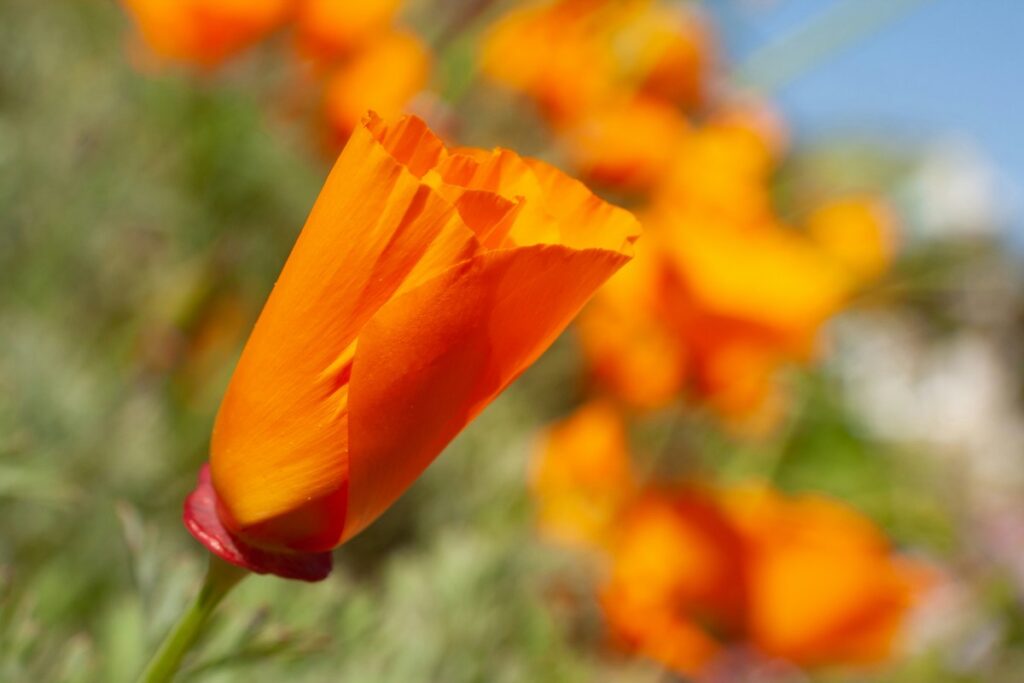
Topanga Canyon State Park, situated at 20828 Entrada Road in Topanga, sits nestled in the cliffs and canyons of the Santa Monica Mountains and features 36 miles of trails through open grassland, live oaks and spectacular views of the Pacific Ocean. The park is located entirely within the Los Angeles City limits and is considered the world’s largest wildland within the borders of a major city, offering excellent recreational opportunities for both hikers and mountain bikers – restricted to fire roads – and equestrians. Bound on the south by Pacific Palisades and Brentwood, on the west by Topanga Canyon and on the east by Rustic Canyon, Topanga Canyon State Park boasts numerous geologic formations, including earthquake faults, marine fossils, volcanic intrusions and a wide variety of sedimentary foundations. Although some poppy blooms eventually go to seed, there are still vibrant patches of orange blossoms throughout the Santa Monica Mountains, so when you’re at Topanga Canyon State Park, look for pink clarkia – known as “farewell to spring” as the early bloomers begin to fade – along with purple vetch and white “popcorn” flowers. Open 8 am till sunset.
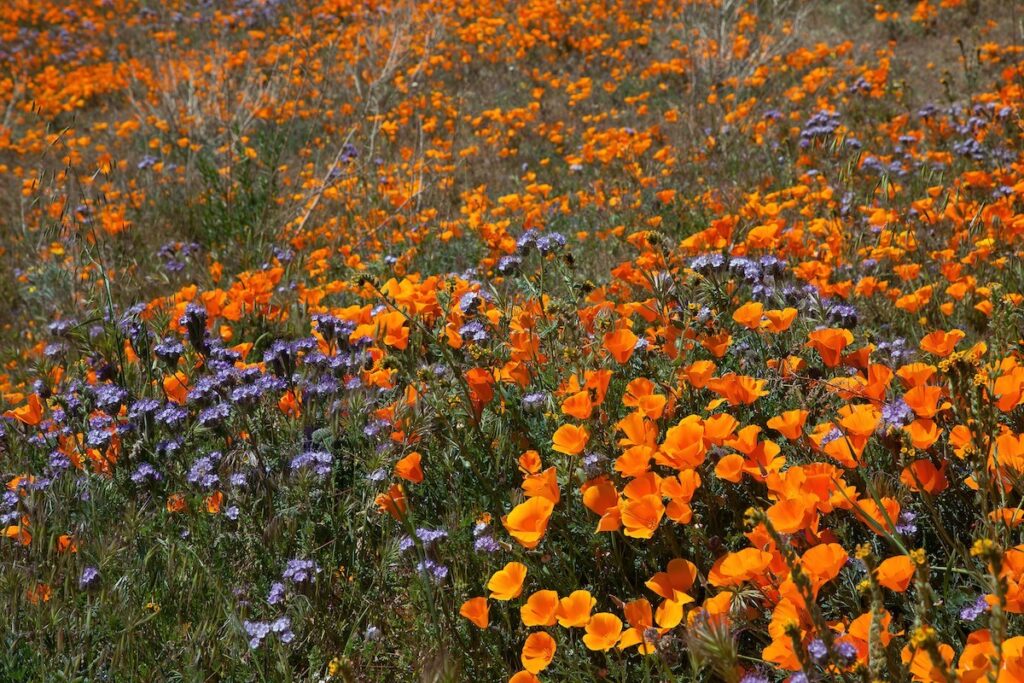
Paramount Ranch, located at 2903 Cornell Road in Agoura Hills, offers opportunities to learn about film history while spending time in the beautiful environment, boasting several miles of easy-to-moderate scenic hikes meandering through chaparral, riparian and valley oak savannah plant communities. When Paramount Pictures leased the ranch in 1927, an era of film production began that continues today – experience the area where Bob Hope starred in Caught in the Draft (1941), and Jane Seymour had the leading role in Dr. Quinn, Medicine Woman (1993-1998), and visit the spots where HBO’s Westworld (2016-2017) and American Sniper (2014) were shot. Poppies and other flowers also grow along the trails in nearby Triunfo Creek Park, while Paramount Ranch bursts with vast patches of poppies for you to take in.
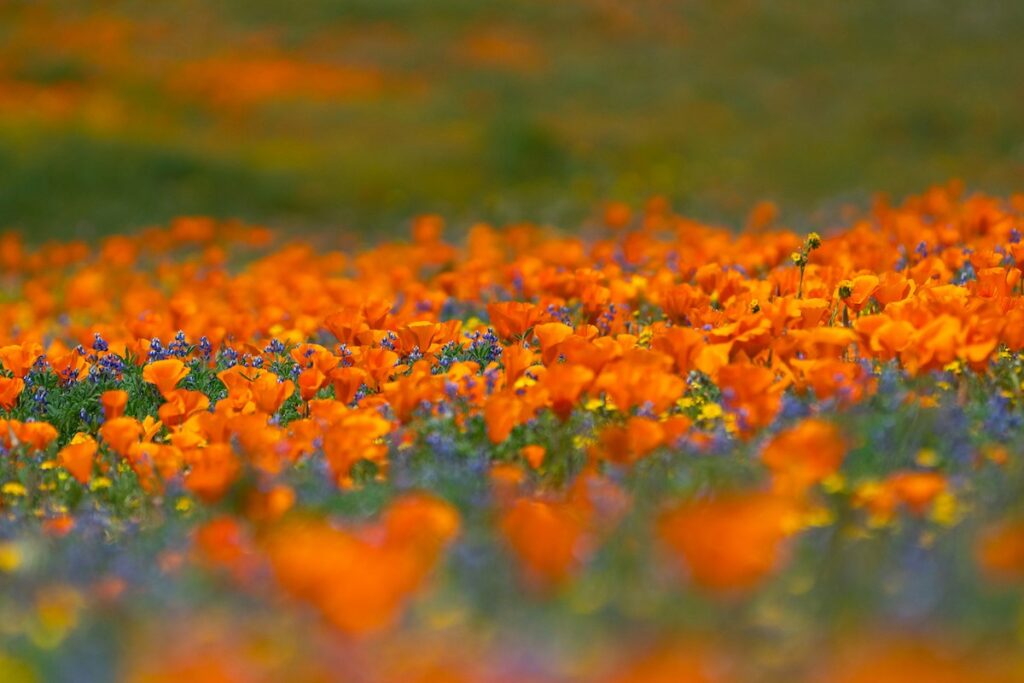
Trippet Ranch, being the main access point into the aforementioned Topanga Canyon State Park, is therefore also situated at 20828 Entrada Road in Topanga and boasts trails characterized by picturesque oak groves and open meadows, with many of the trails making excellent connection points to longer hikes within the park. Once a “gentleman’s ranch” for a weekend getaway from the city, Trippet is often considered the TCSP’s “headquarters,” playing host to a variety of wildflowers, including lupines, poppies and sunflowers spread across more than 11,000 acres of chaparral, oak woodland and grassland. We recommend the 3 1/2-mile Musch Ranch Trail Loop for the lushest displays of wildflowers; an active group of docents conducts public walks during the spring flowering, and an informative brochure accompanies a well-marked nature trail.
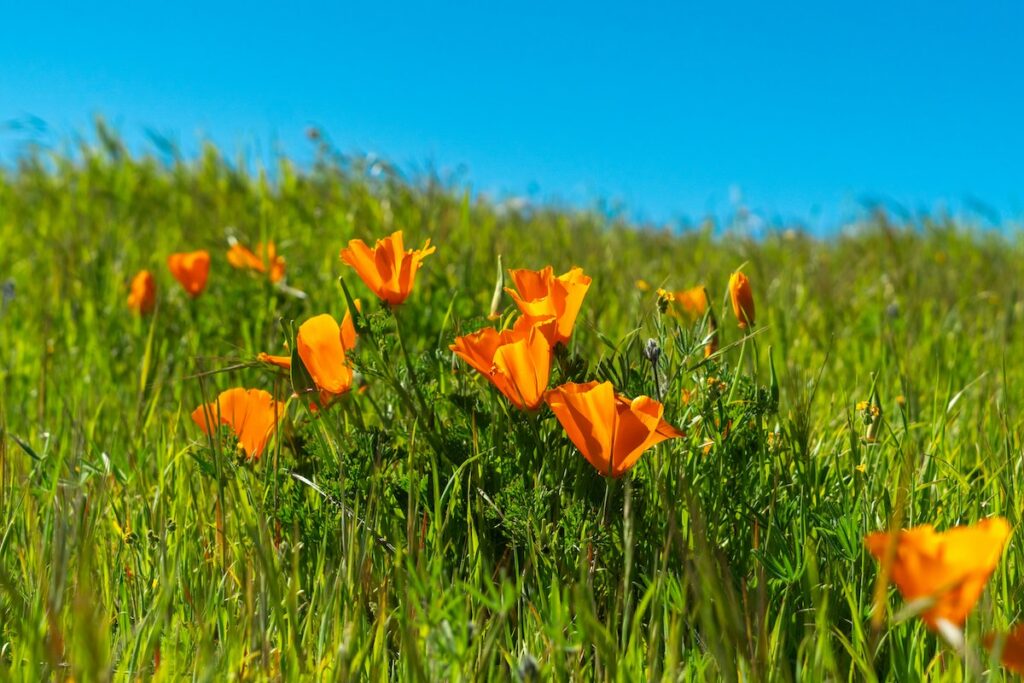
Santa Rosa Valley Park, located at 10241 Hill Canyon Drive in Camarillo, offers 50 acres of natural open space that invites horseback riding, wilderness exploration, hiking and other environmentally friendly activities, with visitors able to access several local trails from the park. Two equestrian riding areas complement a training area and two horseshoe pits, while the creek that runs along part of the trail remains complete with a strong flow. Santa Rosa Valley Park is situated at the entry point to the Conejo Canyons Bridge, where you can access trails in the Western Plateau area of Thousand Oaks, maintained by the Conejo Open Space Foundation. From Thousand Oaks, take Moorpark Road down to the Norwegian Grade through Santa Rosa Valley until you begin seeing signs for the park – where gorgeous views of poppies and more await.
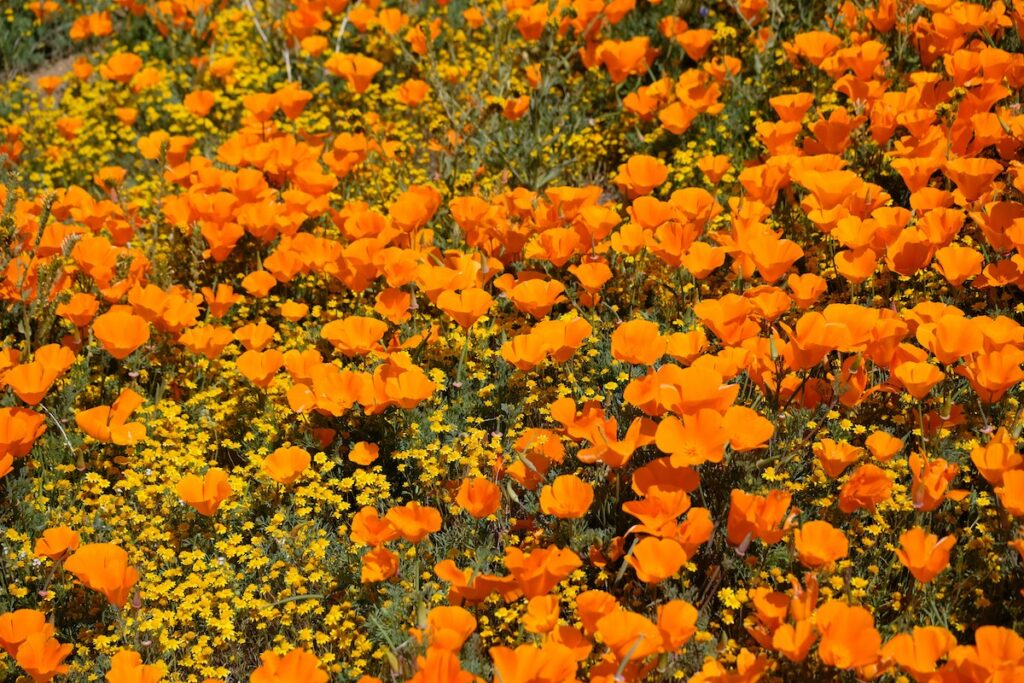
Antelope Valley California Poppy Reserve, located at 15101 Lancaster Road in Lancaster, comes alive each spring with the seasonal surprises of the Mojave Desert Grassland Habitat, the duration and intensity of colors and scents varying from year to year. The wildflower season generally lasts from as early as mid-February through May, with various wildflowers creating a mosaic of color that changes daily. This State Natural Reserve is located on California’s most consistent poppy-bearing land, and the broad views of this landscape provide eyefuls of brilliant wildflower hues and fragrances. Whether you enjoy expansive fields or the close-up study of a single flower, this is the place to visit. Open from sunrise to sunset daily year-round.
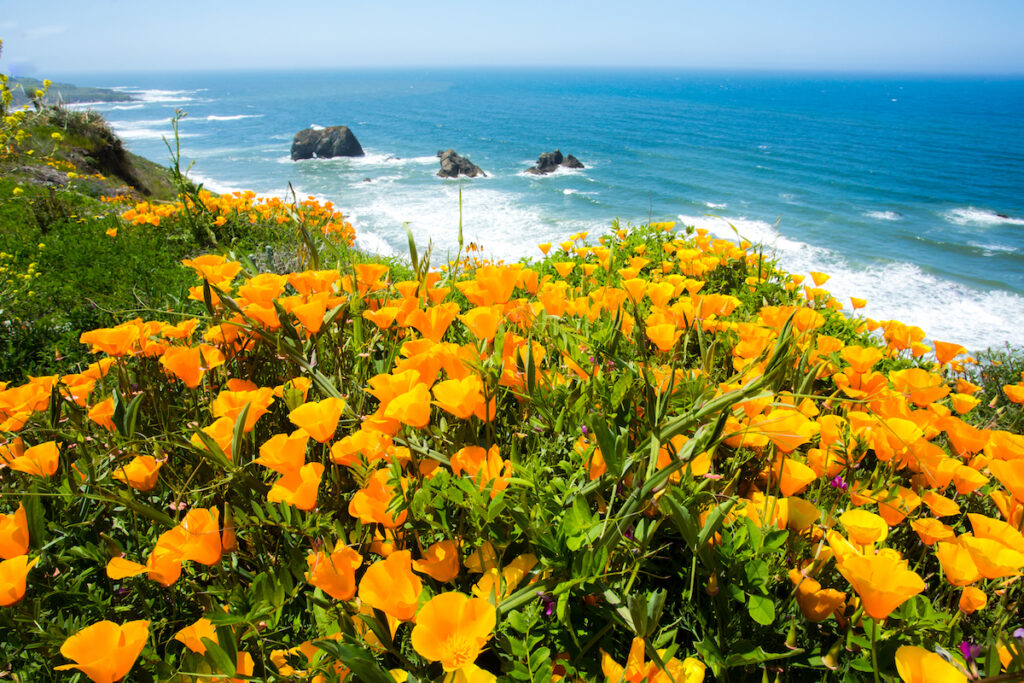
Point Mugu State Park, situated at 9000 Pacific Coast Highway in Malibu amidst the Santa Monica Mountains, features five miles of ocean shoreline with rocky bluffs, sandy beaches and sand dunes, rugged hills and uplands, two major river canyons and wide grassy valleys dotted with sycamores, oaks and a few native walnuts. If you’re looking for the best chance of a spectacular sight, head to Point Mugu State Park and Rancho Sierra Vista, both of which flank the western end of the mountain range; take the Chumash Trail, starting at PCH, a steep climb where chocolate lily and globe gilia are known to grow along the ridgeline…or begin on the north side at Rancho Sierra Vista near Thousand Oaks, where you can walk through the rolling hills in search of wildflowers under the shadow of Boney Mountain. Open from 8 am to sunset.
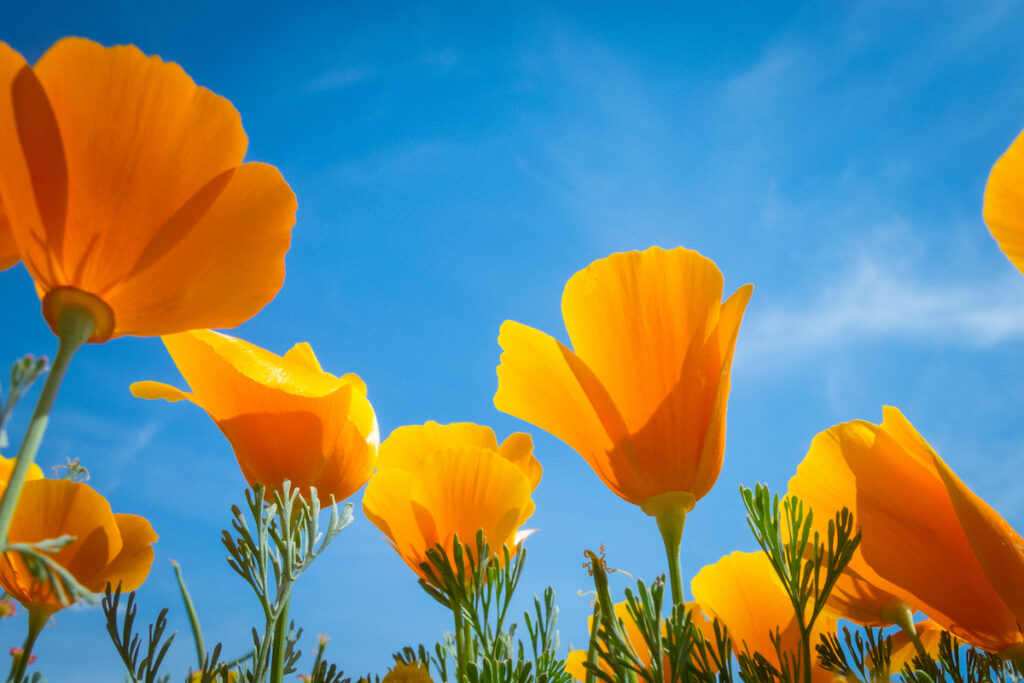
Point Dume, situated at Cliffside Drive and Birdview Avenue in Malibu and officially known as Point Dume State Beach, features headlands, cliffs, rocky coves and vast beach access, all of which are noted for swimming, surfing and scuba diving. At the end of Westward Beach Road, access to Point Dume Nature Preserve begins from the cul-de-sac where a gradually ascending trail leads to an ancient coastal bluff sand dune – and it’s here that an incredible view encompassing the entire Santa Monica Bay, north Malibu Coast, inland Santa Monica Mountains and distant Catalina Island can be enjoyed from the top on a clear day. Mid-March-through-mid-April is when you’ll find an explosion of Giant Coreopsis wildflowers at the Point Dume Nature Preserve, along with beautiful blue skies and ocean, seals, dolphins, an occasional whale and other eye-opening images. You’re missing out if you’ve never visited this fantastic local destination.
Things to DO When California Poppy Viewing:
- Stay on whatever trail you pick
- Plan ahead and start the day early
- Leave no trace behind
- Smell the flowers without getting too close
- Be respectful to the other visitors, the environment and all surrounding flora/wildlife
- Check the weather – for your sake and that of the poppies
- Explore the desert
- Follow the bloom status
Things NOT to do When California Poppy Viewing:
- Don’t go off the trail and step on the flowers
- Don’t pick the flowers
- Don’t bring any heavy equipment into the fields (believe it or not, we’ve seen airplanes, steamrollers, bicycles, wagons, skateboards, boats and just about anything other than one’s two feet come through these viewing areas)
- Don’t visit the most vulnerable parks (as an example, Joshua Tree National Park took a while to recover from vandalism sustained one year)
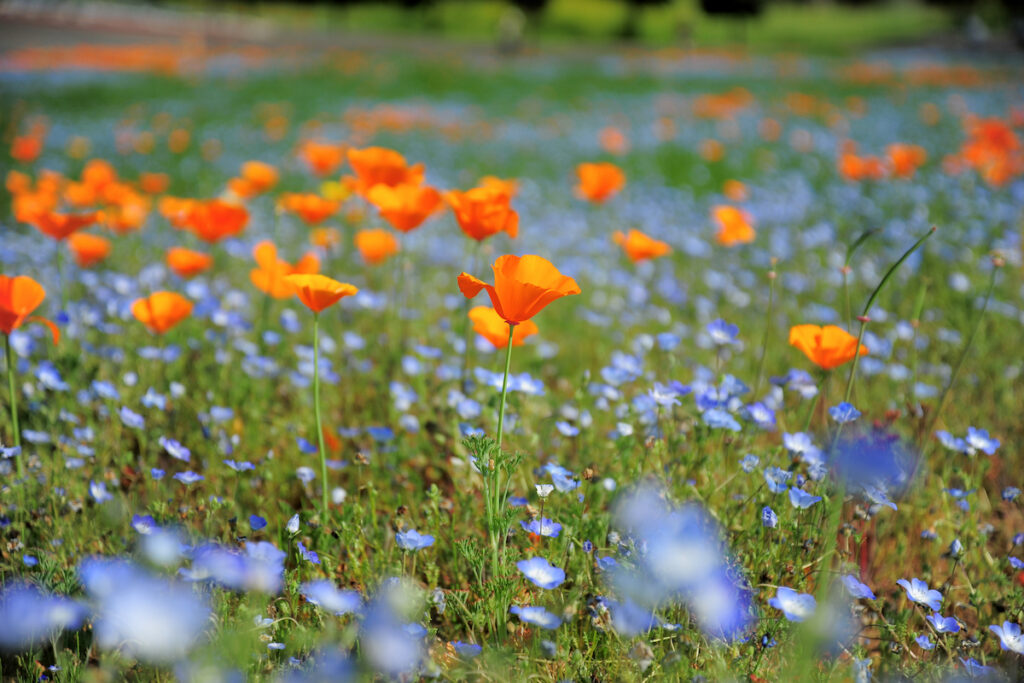
California’s nickname is typically thought to allude to the rush of 49ers who traveled west to pan for gold. Still, some believe that “The Golden State” refers to the eye-catching blossoms of the California poppy, the delicate yellow-orange flower that blooms each spring – from Arcata in the north to San Diego in the south. It definitely pays to do a little research to find the most up-to-date information and predictions.







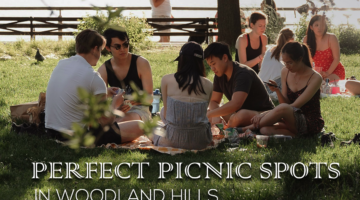


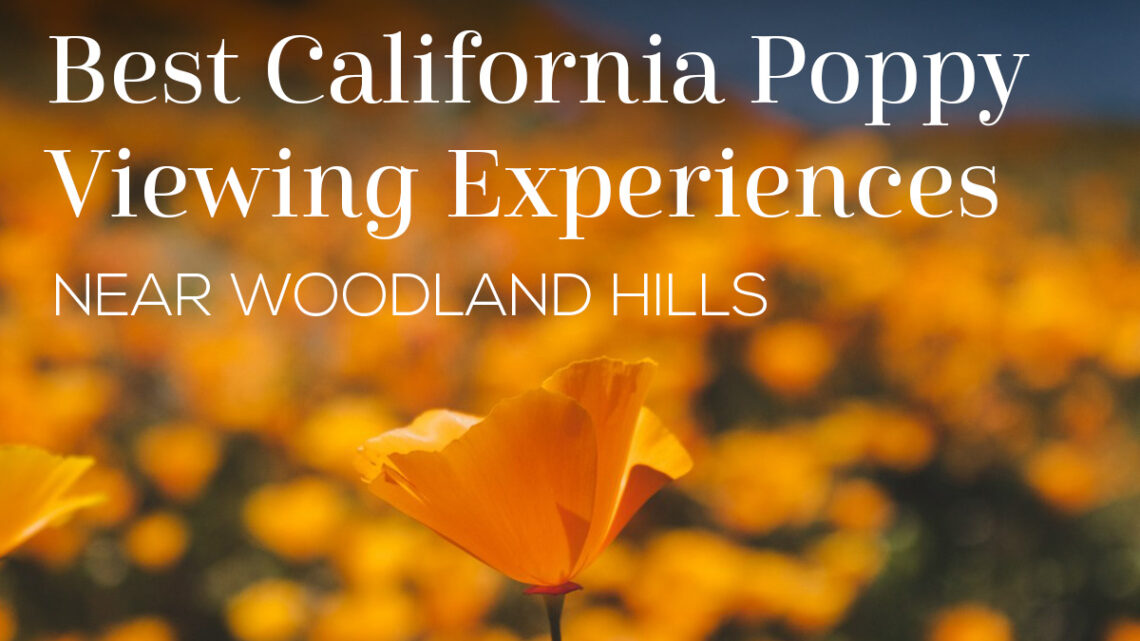
No Comment